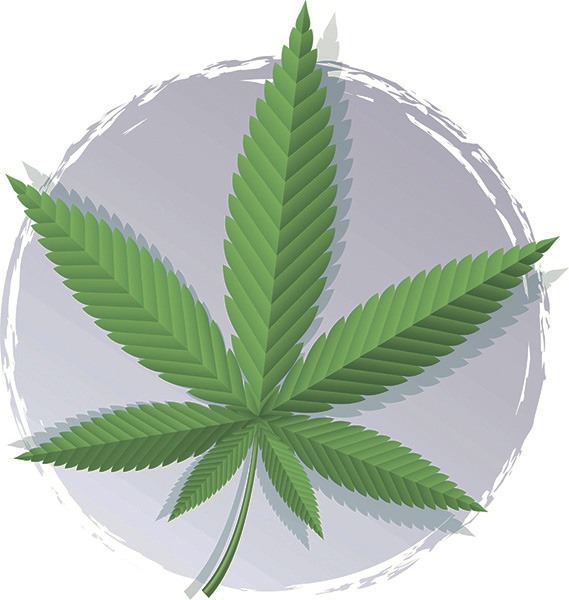With the passage of I-502 in 2012, development of marijuana legislation and marijuana research has surged to unprecedented levels. The Sounder’s sister paper, the Enumclaw Courier-Herald, wrote the following story about pot myths.
by Ray Still
Courier-Herald staff writer
Think back to high school health class – you may have seen the old propaganda film “Reefer Madness,” originally released in 1938, though it was revived and brought back to schools in the 1970s. Sparing the plot details of the film, it paints marijuana as “the new drug menace which is destroying the youth of America in alarmingly increasing numbers.”
The film claimed marijuana is a violent and soul destroying narcotic that leads to “acts of shocking violence, ending often in incurable insanity.”
You’ve probably heard the opposite claims, though, if you’ve ever been to Seattle’s Hempfest. Stories about marijuana being a “miracle drug” that cures anxiety, depression and even cancer are thrown around like joints from a bucket (which is a common occurrence at 4:20 p.m.) while presenters monologue about how being high doesn’t affect their ability to drive or operate heavy machinery and that they shouldn’t have to go to court for their DUI citation.
While most people tend to gravitate toward the center of the marijuana issue and away from the extreme ends, propaganda and misinformation about marijuana is still more easily accessible than trustworthy scientific research. And with I-502 only having passed into law two years ago, many questions about the long-term health effects of marijuana go unanswered and are subject to old biases and new assumptions from both sides of the debate.
So which facts are solid, and which are just smoke?
Is marijuana smoke more carcinogenic than tobacco smoke?
Exactly how healthy, or unhealthy, smoking marijuana can be is still being debated by scientists and researchers. While medical marijuana has been prescribed for general pain and anxiety, the long-term health effects of the drug are relatively unknown.
However, the chemical makeup of marijuana is less mysterious, and gives researchers a clue as to how marijuana can affect the body.
According to the American Lung Association, marijuana smoke contains 33 known carcinogens.
In contrast, cigarette smoke contains 70 carcinogens.
While marijuana smoke contains fewer carcinogens than tobacco smoke, the American Lung Association and the British Lung Foundation have said differences in how marijuana and tobacco are smoked may tip the scales.
According to the American Lung Association, “When equal amounts of marijuana and tobacco are smoked, marijuana deposits four times as much tar into the lungs. This is because marijuana joints are unfiltered and often more deeply inhaled than cigarettes.”
The British Lung Foundation estimates that while people generally smoke marijuana less often than cigarettes, people inhaling marijuana smoke take a two-thirds larger puff volume than when people inhale tobacco smoke.
Additionally, marijuana smokers hold the smoke in their mouth for four times longer than tobacco smokers, “and end up with five times the amount of carboxyhemoglobin in their blood per cigarette smoked,” the British Lung Foundation wrote in a 2012 report.
Carboxyhemoglobin is a mixture of carbon monoxide and hemoglobin, the part of red blood cells that transport oxygen. While carboxyhemoglobin limits the amount of oxygen the blood can deliver to the body, carboxyhemoglobin is not considered a carcinogen.
All in all, the British Lung Foundation wrote the increased puff volume and hold time, “means it’s likely that the body retains much more of the products of cannabis smoke, leading to a greater respiratory burden of carbon monoxide and smoke particles than when smoking a similar quantity of tobacco.” However, exact measurements of how much more carbon monoxide, smoke particles and carcinogens that would be retained in the body were not given.
The Alcohol and Drug Abuse Institute, run by the University of Washington, is one institution charged with researching marijuana and marijuana smoke by the state. Some proceeds from the state’s 25 percent excise tax on marijuana is given to the institute for research funds.
The Alcohol and Drug Abuse Institute has cited research by 19 studies, and only does research on adolescent marijuana use.
The institute wrote that marijuana smoke contains “about 50 percent more benzopyrene and nearly 75 percent more benzanthracene, both known carcinogens, than a comparable quantity of unfiltered tobacco smoke.”
However, the institute also wrote that several well-designed and large-scale studies “have failed to find any increased risk of lung or upper airway cancer in people who have smoked marijuana,” although studies also haven’t ruled out that marijuana smokers have a higher cancer risk than non-marijuana smokers.
Additionally, the institute wrote that there are other ways to introduce marijuana to the body that may not have the same health risks as smoking. Joints, or hand-rolled and unfiltered marijuana cigarettes, have been the focus of the studies and facts mentioned above.
According to the institute, smoking devices that use a water filter system, such as bongs, do not reduce the risks associated with marijuana smoke. Vaporizers, which release the psychoactive chemical THC in marijuana without burning the plant, release lower levels of tar than unfiltered marijuana smoke, according to the institute. However, vaporizers produce other chemicals that may be harmful to the body, including ammonia.
Finally, eating marijuana naturally negates smoking risks, according to the institute, although it takes longer for the THC to take effect and may last longer than smoking marijuana. THC itself has not been identified as a carcinogenic chemical.



